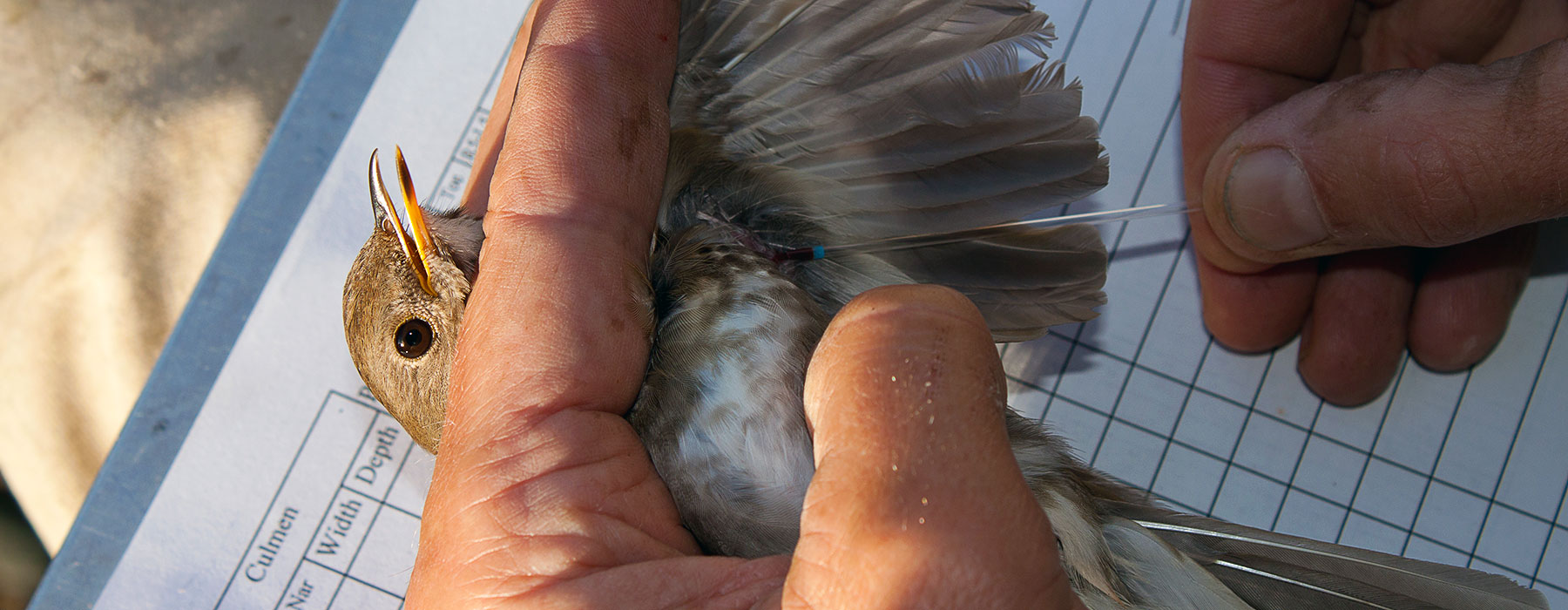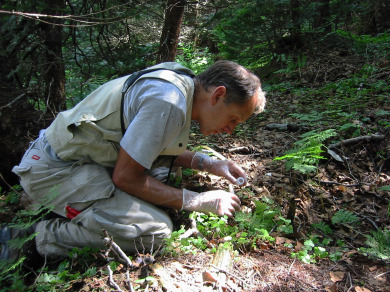Just a small drop of blood harmlessly sampled from a songbird before releasing it back to the wild tells our scientists a lot about the health of these mountain ecosystems.
Conventional thinking held that the mercury threat was limited to aquatic environments since it is most readily converted to its toxic form (methylmercury) in wetlands. VCE's groundbreaking research has revealed elevated mercury levels, not only in birds, but throughout the entire terrestrial food web in the mountains of northeastern North America.
Mercury has long been considered a public health threat. Ingested when people eat fish from contaminated waters, it is especially dangerous to children, because it harms the development and function of the central nervous system. Every state in the Northeast warns pregnant women to limit fish consumption from their waters.
It is also well known that mercury ends up in fish-eating birds such as loons and eagles. In wetlands, inorganic mercury transforms into its toxic form, methylmercury, then moves up the aquatic food web. As it rises through the food web, it further concentrates, a process called biomagnification.
Away from the wetlands, mercury was believed to remain locked in its harmless inorganic state. When VCE scientists told colleagues their plan to sample montane forest songbirds for the toxin, they were told they’d most likely find nothing, but that it still would be worth sampling to find out.
What our scientists have documented has changed how we view mercury and increased global concern for mitigating its release into the atmosphere. Elevated mercury levels throughout the food web -from the forest floor to insects to salamanders to songbirds and finally hawks – demonstrate that methylmercury can be produced in terrestrial ecosystems as well. This finding has implications for the way scientists and policy makers view the nature and extent of mercury in northeastern North America and beyond.
FUTURE RESEARCH QUESTIONS
What are the consequences of bioaccumulating methylmercury in montane vertebrates? Do individuals with relatively high levels of methylmercury attract mates as often, produce as many viable young, and live as long as individuals with low levels of methylmercury?
OUR MERCURY PUBLICATIONS
Townsend, J.T., C.T. Driscoll, C.C. Rimmer, and K.P. McFarland. 2014. Avian, salamander, and forest floor mercury concentrations increase with elevation in a terrestrial ecosystem. Environmental Toxicology and Chemistry 33:208-215.
Townsend, J.M., C.C. Rimmer, C.T. Driscoll, K.P. McFarland, and E.E. Iñigo-Elias. 2013. Mercury concentrations in tropical resident and migrant songbirds on Hispaniola. Ecotoxicology Volume 22 (1): 86-93. DOI 10.1007/s10646-012-1005-1. DOI: 10.1007/s10646-012-1005-1
Rimmer, C.C., E.K. Miller, K.P. McFarland, R.J. Taylor, and S.D. Faccio. 2009. Mercury bioaccumulation and trophic transfer in the terrestrial food web of a montane forest. Ecotoxicology. DOI: 10.1007s10646-009-0443-x.
Rimmer, C.C., K. P. McFarland, D. C. Evers, E. K. Miller, Y. Aubry, D. Busby, and R. J. Taylor. 2005. Mercury levels in Bicknell’s thrush and other insectivorous passerine birds in montane forests of the northeastern United States and Canada. Ecotoxicology 14:223-240. DOI: 10.1007/s10646-004-6270-1


